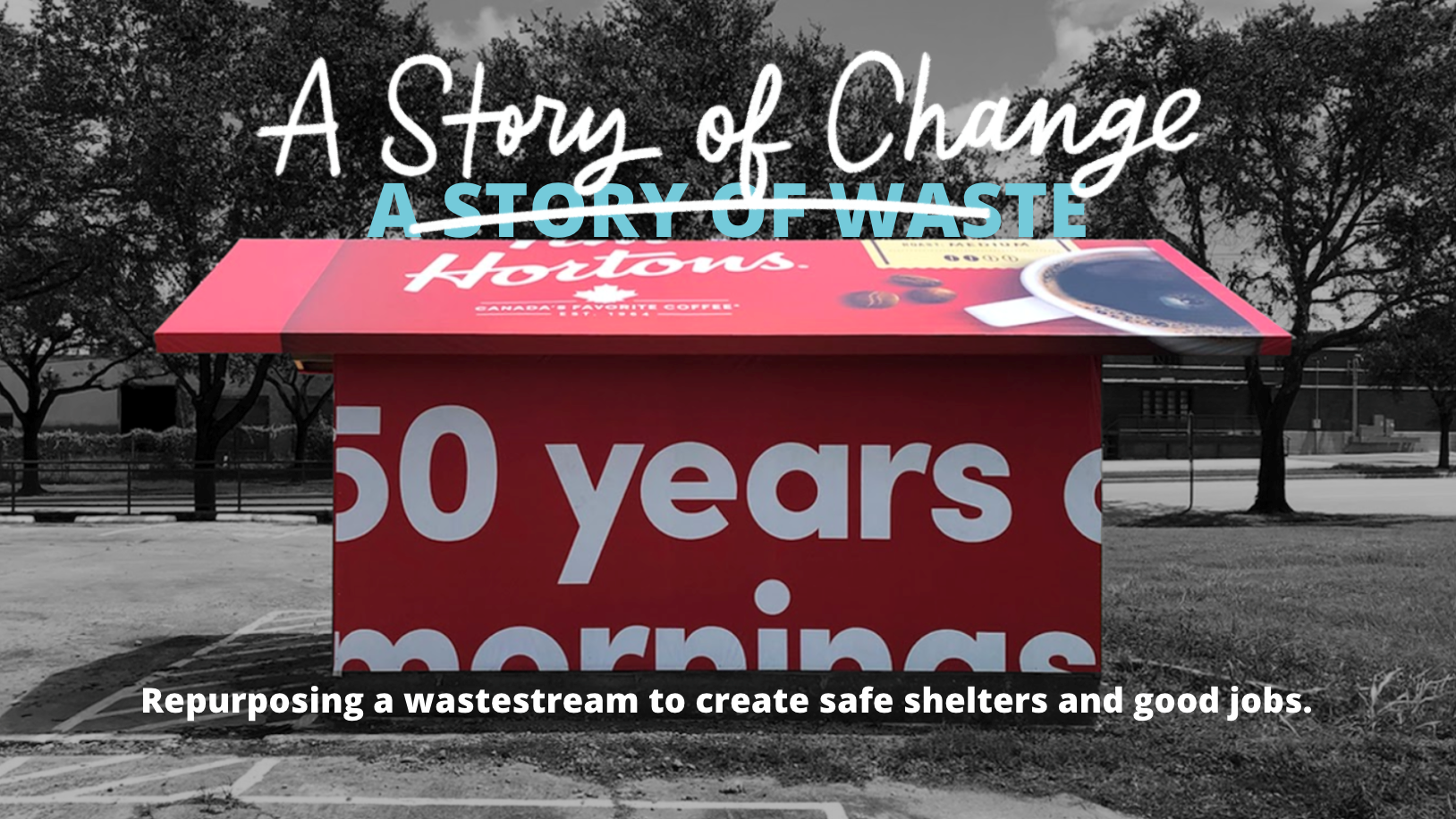
Every Shelter Recycles Vinyl Billboards to House Refugees Throughout the World
Around the world, there are approximately 26 million refugees displaced from their homes, due to violence, war, or persecution, and of these, approximately 6 million live in refugee camps. Upon arrival, refugees have access to tarp shelters, which provide them privacy and security. These shelters are usually manufactured from canvas cloth or woven plastic sheeting but can often tear within six months.
While designed to be temporary, the reality is that refugees often live in these camps for decades, on average for 12-17 years, essentially camping during this time period. Because of this, there is a demand for a durable and sustainable alternative to the camps’ housing issues. That’s where one nonprofit has found that repurposing vinyl can cater to this need.
Every Shelter has reimagined durable shelters for the displaced and for refugee camps. The decision to choose vinyl is representative of Every Shelter’s vision of taking the lead from the families and communities it serves. It credits refugees as the innovators who recognized the durability of vinyl and started using billboard material instead of the traditional tarp for their shelters. In their use of vinyl, the refugees found that tarps made from vinyl billboards were a more efficient, long-term solution. Taking a cue from the refugees, the nonprofit has begun piloting the use of vinyl for the roofing in shelters in Tanzania and Uganda.
“The legacy tarp materials leak or tear within months,” said Scott Key, Every Shelter CEO and Co-founder. “It’s a clearly unsustainable option for individuals that will call these shelters home for possibly a decade or longer. Comparatively, vinyl will last for years, can be locally sourced, and is much more sustainable than other alternatives.”
Vinyl provides a long-term solution and the outcome of outfitting shelters with vinyl is two-fold – it houses these vulnerable populations, contributing to a positive social impact, while also reducing waste and diverting these billboards from the landfill, contributing to positive environmental impact. The recycled billboards will last for 3 to 4 years, and if it begins to rip, it’s repairable, making it more equipped for continued use.
Although Every Shelter generally focuses its efforts abroad, following Hurricane Laura in 2020, their efforts were put to use closer at home by recycling billboards into temporary roofs for over 11,000 disaster victims in Texas and Louisiana. “Everyone deserves shelter, and we’re proud to be able to help provide them both at home and abroad,” Key said.
